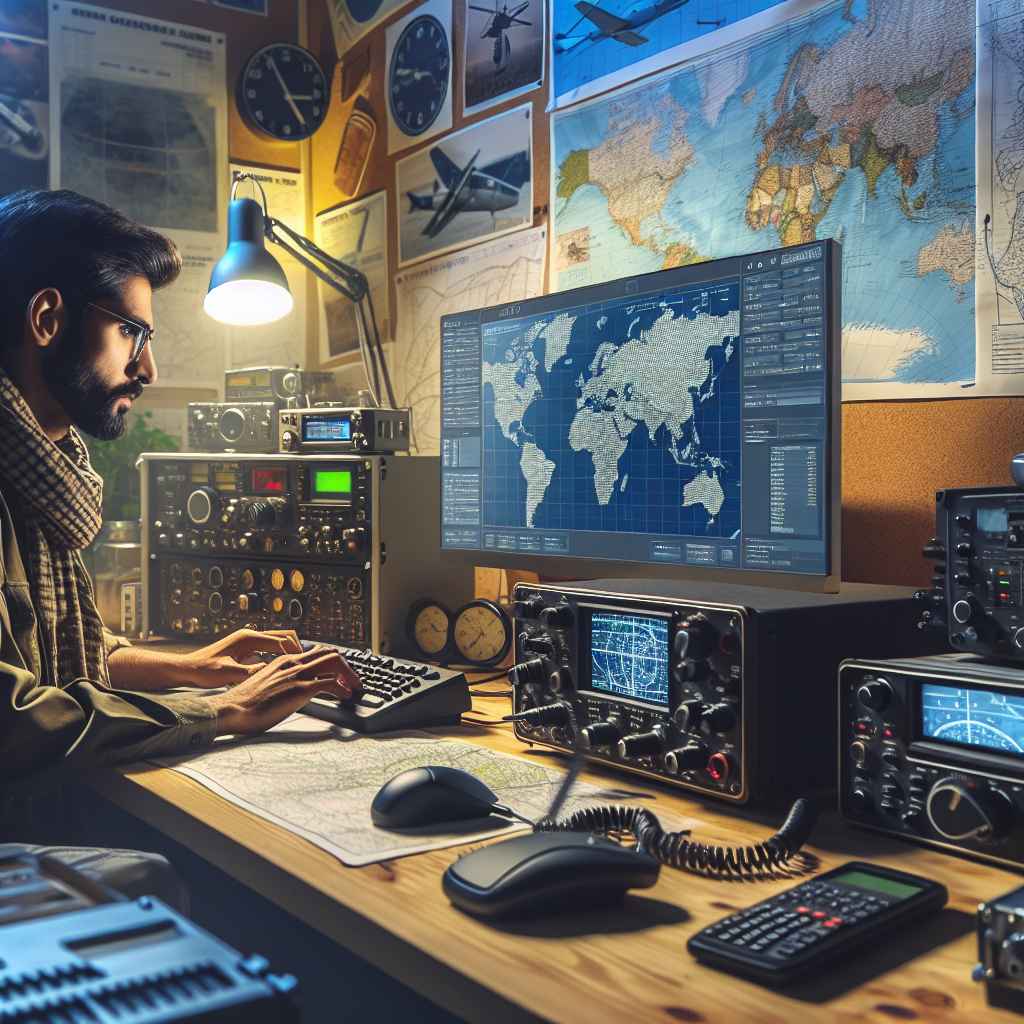As an Amazon Associate I earn from qualifying purchases. This means that if you click on an Amazon link from my blog The Cyber Aviator Chronicles and make a purchase, I may earn a commission. This does not incur any additional cost to you. I only recommend products I believe in and that I think would be helpful to my readers.See my Disclosure Policy for more information.
The Significance of Amateur Radio
Amateur radio, often called “ham radio,” plays a crucial role in global communication. It enables individuals to connect across borders, fostering international goodwill and cultural exchange. During emergencies and disasters, such as hurricanes, fires, and floods, amateur radio operators become invaluable assets, providing critical communication when conventional systems fail
Decoding the Basics of the Technician Class License
The Technician Class License is the first of three license classes issued by the Federal Communications Commission (FCC) in the United States. To obtain this license, candidates must pass a 35-question multiple-choice exam covering radio theory, regulations, and operating practices. Key aspects of the Technician Class License include:
- Privileges: Access to all amateur radio frequencies above 30 MHz, plus limited privileges on HF bands
- Power limits: Maximum of 1,500 watts PEP output on most frequencies
- Modes: Voice, data, and image transmissions allowed on authorized frequencies
Essential Study Materials and Strategies
Preparing for the Technician Class exam requires dedication and the right resources. Effective study materials include:
- ARRL’s “Ham Radio License Manual”
- Online practice tests and flashcards
- Video tutorials and online courses
Adopt a consistent study schedule, breaking the material into manageable sections. Join study groups or find a mentor to enhance your learning experience.
Connecting Theory with Practical Applications
Applying theoretical knowledge to hands-on projects is crucial for developing proficiency in amateur radio. Consider these practical exercises:
- Building a simple antenna: Construct a dipole antenna using household items to understand resonance and impedance matching.
- Experimenting with Software-Defined Radio (SDR): Explore digital signal processing and modern radio technologies.
- Participating in Field Day: Join other operators in setting up temporary stations and simulating emergency conditions.
These activities reinforce learning and provide valuable experience in real-world radio operations.
Joining the Global Ham Radio Community
Becoming part of the amateur radio community offers numerous benefits:
- Local clubs: Connect with experienced operators, participate in group projects, and access shared equipment.
- Online forums: Engage in discussions, seek advice, and stay updated on the latest developments.
- Contests and events: Improve operating skills and make contacts worldwide through various competitions.
By actively participating in the community, new operators can accelerate their learning and contribute to the ongoing evolution of amateur radio.
For ongoing updates and exclusive content, consider following The Cyber Aviator Chronicles. It offers additional insights into ham radio, cybersecurity, and aviation.
Final Words
The Technician Class License is more than just a permit to operate; it’s an invitation to join a global community of innovators, communicators, and public servants. As you embark on your amateur radio journey, remember that continuous learning and active participation are key to unlocking the full potential of this fascinating hobby. For those ready to take the next step, consider exploring resources like the ARRL website or local amateur radio clubs. These organizations offer valuable guidance and support for newcomers and experienced operators alike.


Leave a Reply